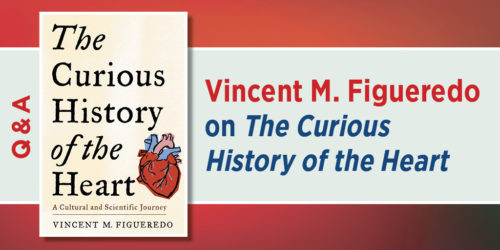Neurogastronomy: Language and Flavor
One of the facets of the brain and food that Gordon Shepherd links in Neurogastronomy: How the Brain Creates Flavor and Why It Matters is the role of language. Below is an excerpt from the book on this subject. (For more on Neurogastronomy read about why we overeat and The Revolution in Smell and Flavor):
This essential role of language in relation to smell and flavor may come as a surprise. The received wisdom (I have believed it myself) is that we are poor at describing our world of smells. There are no words that characterize smells in specific ways, the way we use words to describe colors or simple shapes, for example. Language seems to fail, to resort to analogy, metaphor, or reference to the object that produces the smell. Thus, things smell “sweet,” like the taste of sugar, or, for the scent of bananas, “like bananas.” For an organic chemist, there may be meaning in describing the scent of bananas as the smell of amyl acetate, but if you ask how amyl acetate smells the answer will probably be “like bananas.” The argument against a close link between smell and language is also made on scientific grounds. As we have seen, the cortical receiving area for smell is in the most anterior part of the frontal lobe. By contrast, the cortical area for the motor control of language is Broca’s area in the posterior part of this lobe, and the area for the sensory integration of language,
We have already seen that the ingestion of food, and the retronasal smells involved in flavor, occur through the mouth, the same orifice used in the production of language. Food and language are not only close neighbors in this sense; they occupy the same house. Further reasons for a close link between smell and language are, first, the strong evolutionary link between the rise of cooking and the rise of language, and second, the extraordinary vocabulary we actually have developed for flavors. From the earliest documents of recorded history, it is obvious that foods and their preparation have been high priorities of human societies. It is from these times that the traditional cuisines from around the world have emerged….
In perusing some of the history of those times from the perspective of the sense of smell and its role in food flavors, I have been particularly struck by the richness of the cuisines and the associated richness of the cuisine vocabularies. For example, by Roman times there was a huge demand for herbs and spices imported from Arab traders, who brought them through the silk and spice routes that extended from the Far East (this was a thousand years before Marco Polo). In The Spice Trade of the Roman Empire, J. Innes Miller lists the spices that were mentioned in the cookbooks of the time; they totaled 87. By comparison, a recent edition of The Joy of Cooking lists only 18. This vast array of herbs and spices, each with a name and a characteristic aroma and flavor, indicates the richness of both the cuisines and the languages to describe them from earliest times.
The Vocabulary of Flavor
Today, the vocabulary of food aromas and flavors seems overwhelming. It would help if we could classify all smells and flavors as arising from the mixing of a few “primary” smells, in analogy with how colors arise from just three primary colors, but smell and fl avor are too complex. There are in fact several vocabularies. Organic chemists have produced thousands of terms for the smells and flavors of the molecules they synthesize.
Psychophysicists have their vocabulary for the flavor components isolated by mass spectrometry, as described in chapter 4. And food scientists have their terms for characterizing the flavors of foods, as do wine tasters for their wines. An example may be found on the Flavornet Web site, maintained by the leading psychophysicist Terry Acree and his colleagues at Cornell University: a compilation of more than 700 odorous food components, with data on their chemistry and sensory properties, organized into 25 classes, such as fruity, cooked meat, dairy, fishy, spicy, and so on.
This list provides dramatic evidence that the large universe of smell molecules produces a corresponding large universe of smell perceptions and the vocabulary to give them identities. This is amplified by the associations each of the food smells has with the flavor of which it is a part.
The intriguing idea is that all this vocabulary plus the syntax and grammar to communicate it reflect the attempt on the part of humans to describe their world of smell and flavor. Some claim that humans can discriminate among 10,000 odors. However many it is, there must be a corresponding number of words to describe them. Moreover, we have seen that the sense of smell involves not only the perception of a scent, but also the associated memories that are evoked and the emotions that are attached to it. These amplify the vocabulary, so that as we saw with the incident of Marcel Proust and the madeleine, a perception can bring back the whole scene of a bygone time and the emotions connected with it, all requiring the use of language in order to identify the memory, describe the emotion, and communicate it to others.
A major hypothesis of this book is that the reason it is so difficult to describe these smell and flavor perceptions in words may be that they are represented in the brain as arbitrary irregular patterns of activity, what we have called “smell images.” As we argued in chapter 8, it is difficult to describe in words a nongeometrical visual image such as a face, even though we can identify it unerringly. In like manner, it may be postulated that it is difficult to describe in words a smell image, even though we can identify it unerringly as well.





1 Response